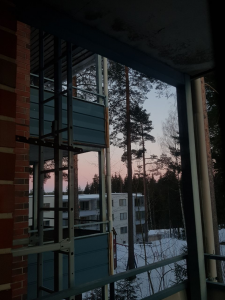
The ecology of Finland
Vol. 25, Issue 16, 10 February 2023
The ecology of Finland belongs to the number of states with a fairly prosperous ecological situation.
Finland is an active member of many regional environmental organizations and is active bilaterally. Finland is particularly concerned about the ecology of the Baltic Sea, recognized as one of the most polluted seas. Blue-green algae are recognized as the main cause of the blooming of water in the Baltic Sea in the summer, which causes mass starvation of fish and poisoning of animals and people.

One of the urgent environmental problems in the country is the issue of acidification of the soil and the warming of the atmosphere due to the effects of natural fuels. These problems are recognized as international, and Finland is engaged in solving them together with other countries of the European Union. Thus, following the EU regulation on reducing greenhouse gas emissions into the atmosphere by 2030 by 40% from the 1990 level, Finland intends to reduce emissions to 50 %.
For example, on April 7, 2018, in the community of Myantyuharyu (Finland), as a result of a derailment from a Russian railway tank, about 35 thousand liters of methyltretbutyl ether poured into the soil, as a result, great damage was caused to the environment.
Methyltretbutyl ether is one of the most important representatives of esters, it is used as an additive to motor fuels that increases the octane number of gasoline.
Environmental problems:
In 2012, the Finnish Environment Center compiled a list of the main pollutants in the country’s reservoirs. This is the Viikinmaki water treatment plant in Helsinki (it accounts for the wastewater treatment of about 20% of the Finnish population).
According to statistics, the amount of household waste averaged 500 kg per year per capita in 2008, and in 2011 it increased to 505 kg per person. In 2012, the total amount of household waste in the country amounted to 2.7 million tons, of which almost two-thirds were sent for recycling. By the beginning of 2016, a law banning the disposal of biological waste in landfills came into force, and planned work is underway to reduce the total waste level to 450 kg per person per year. Ordinary Finns are actively involved in the elimination of household garbage on city streets and along roads.
Features of the nature of Finland:
Two-thirds of the country’s territory is occupied by taiga. There are many lakes and rivers in Finland. The water space is about 10% and is widely used for logging and communication.The country is dominated by plains. Mount Halti in Lapland, rising 1,328 km above sea level, is the highest point. The northern latitudes and the proximity to the sea have affected the natural features of Finland.
Many forests have been preserved in almost pristine condition, rich in mushrooms and berries. Typical representatives of the animal world: bears, lynxes, wolves, foxes, wolverines, stoats, owls, and white-tailed eagles. Rare-ringed seals live on Lake Saimaa. Finland’s forests cover about 76% of the country’s territory (0.5% of the world’s timber reserves), which makes Finland the richest country in Europe in forest resources. According to the CIA World Factbook, as of 2018, forests cover 72.9% of Finland’s territory, the highest percentage among all developed countries in the world. The only other developed countries with such a high percentage of the forest.
- New Year’s mood - 22nd November 2024
- Minimalism is a way of life. Where to begin? - 15th November 2024
- Why do you need an air humidifier? - 8th November 2024
